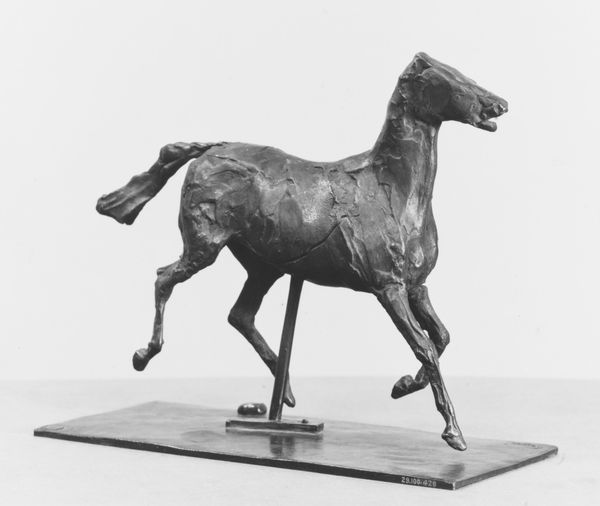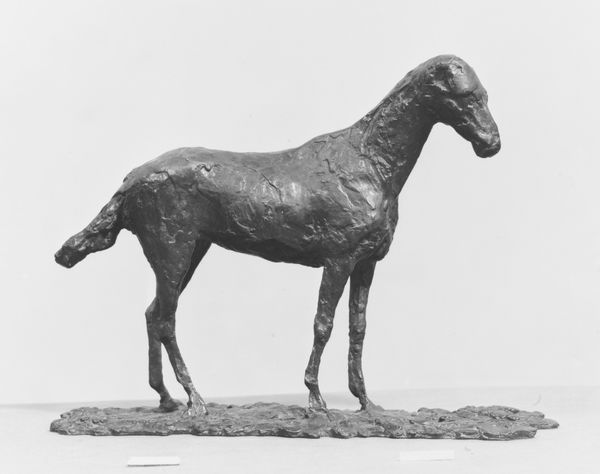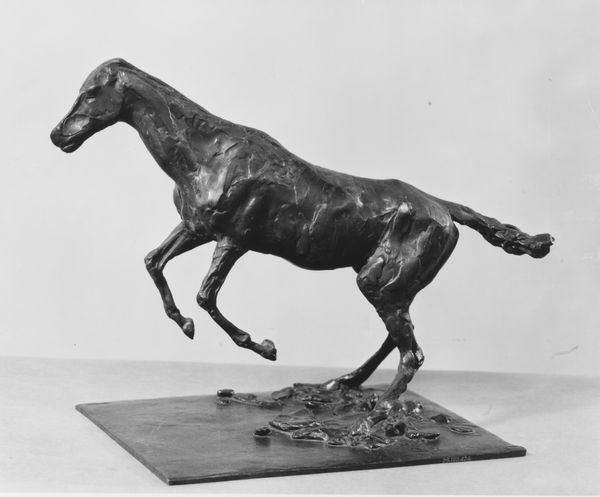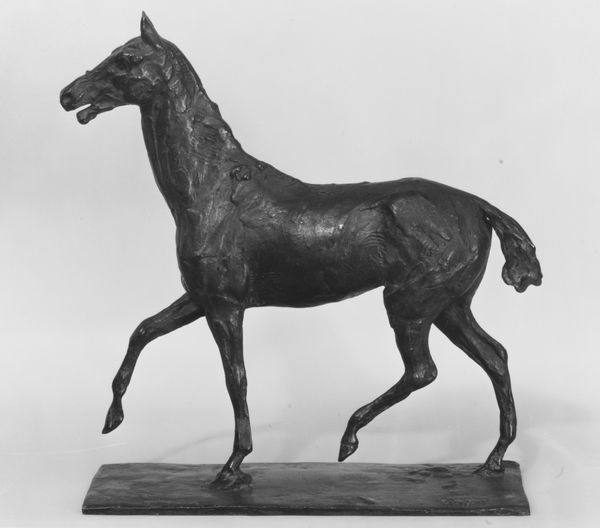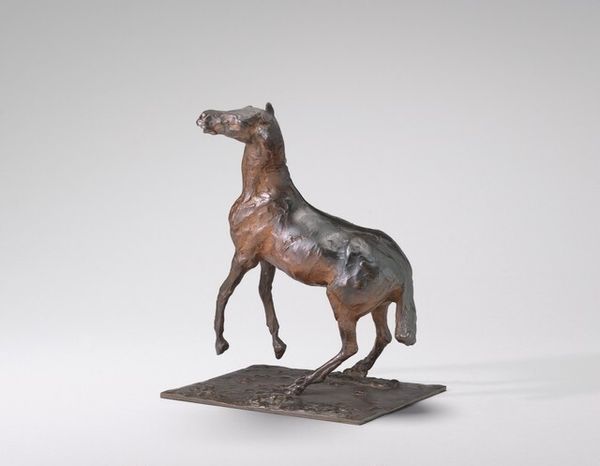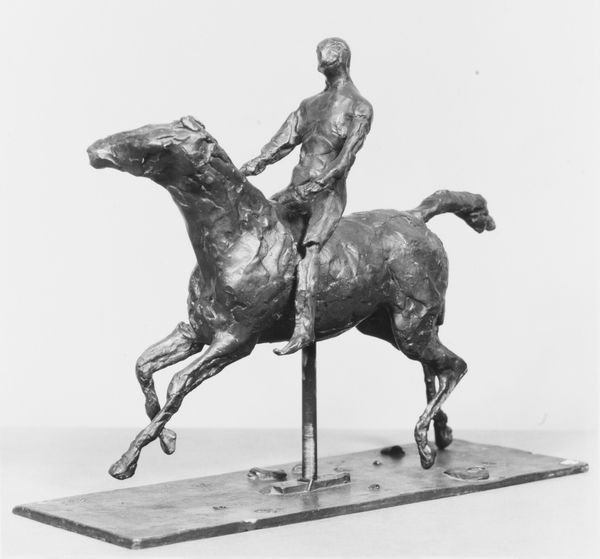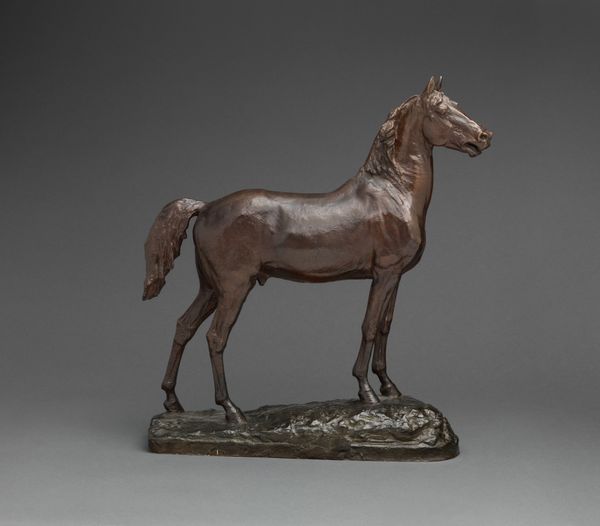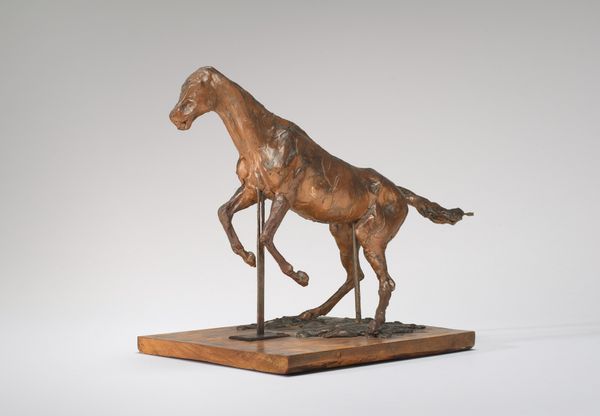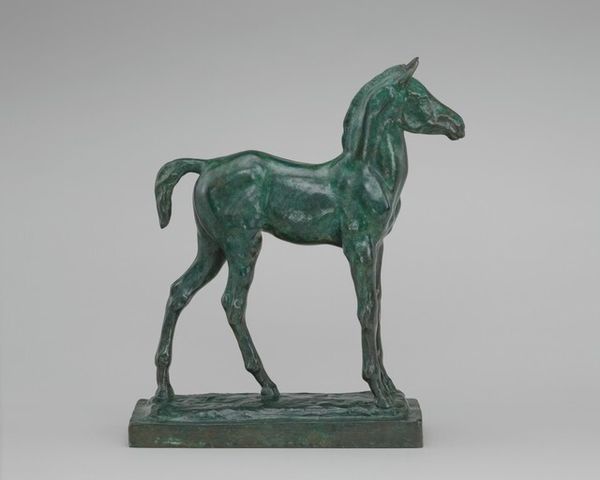
bronze, sculpture
#
animal
#
impressionism
#
sculpture
#
bronze
#
figuration
#
sculpture
#
decorative-art
Dimensions: 10-5/8 x 10-3/4 x 5-1/16 in. (27.0 x 27.3 x 12.9 cm.)
Copyright: Public Domain
This is Edgar Degas's bronze sculpture, "Prancing Horse." Degas was a product of 19th-century France, a society marked by rigid class structures and traditional gender roles. He originally created this sculpture in wax but it was cast in bronze posthumously. Degas was a man of his time, and his art often reflects the male gaze prevalent then. Yet, he was also an innovator, capturing fleeting moments of movement with striking realism. In this sculpture, we see a horse caught mid-stride, its muscles taut, its energy palpable. The horse, throughout art history, is symbolic of power and freedom. Consider how these concepts were understood differently across social classes and genders during Degas's time. Degas once said, "Art is not what you see, but what you make others see." What do you see in this prancing horse? Does it evoke feelings of admiration, or does it prompt you to question the historical context in which it was created? This sculpture invites us to contemplate the complex interplay between art, identity, and societal norms.
Comments
No comments
Be the first to comment and join the conversation on the ultimate creative platform.

